The Howard Tombs at Framlingham: More Tales from Inside the Vaults
Inside an incongruous parish church, in the small Suffolk town of Framlingham, lie some of the most magnificent Tudor tombs you are likely to see anywhere. Although unfinished, they are glorious and contain the remains of some of the most important figures in Tudor history, including Thomas Howard, third Duke of Norfolk; his son, Henry Howard, Earl of Surrey and the young Henry Fitzroy, Duke of Richmond. In this blog, we learn all about the Howard tombs at St Micheal’s in Framlingham.
Note: This blog is based on a transcription of the conversation I had when I met up with Sandra Cartwright, a local guide and expert on the tombs. You can listen to the full conversation here, on this month’s Tudor Travel History & Show.
The History of the Howards and Framlingham
Sarah:
I’ve come to the Church of St Michael in Framlingham to discover more about an absolutely fascinating set of Tudor tombs, located here, in the chancel of the church. Today Sandra Cartright will be our guide. Sandra, maybe we could start by considering the association between Framlingham and the Howards because, of course, in the sixteenth-century Framlingham was an important base for the Howard family. Maybe you could tell us a little bit more about this context and that history?
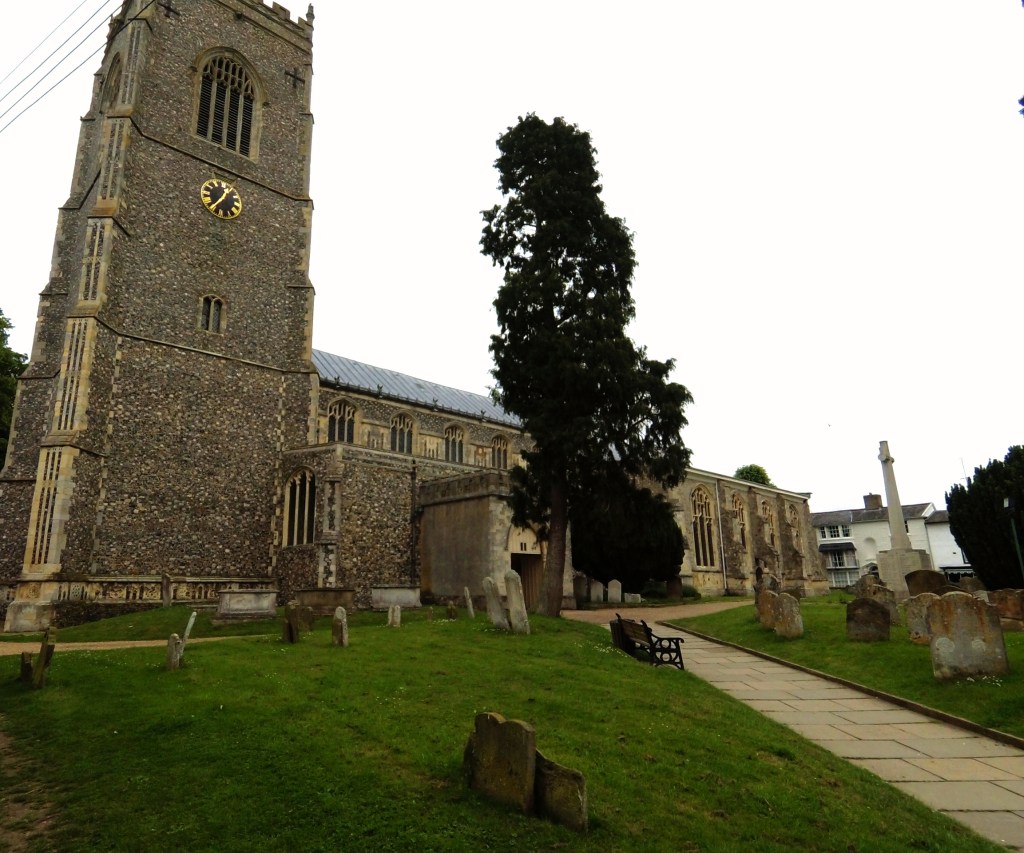
Image: © The Tudor Travel Guide
Sandra:
Well, the Howards, also known as the Dukes of Norfolk, originally came from North Norfolk near to King’s Lynn. John Howard was a lawyer. It’s been said that the way to the top in Tudor times was by law, marriage and warfare and the Howards excelled in all those departments, particularly in marriage!
John Howard became associated with the Mowbrays, who lived at Framlingham Castle. The grandfather of the first Howard Duke of Norfolk married one of the Mowbrays. That was how they became associated with the Dukedom. John Howard, the first Duke of Norfolk that we’re interested in, was granted the Dukedom of Norfolk by Richard III. He fought alongside Richard at the Battle of Bosworth in 1485. Unfortunately, the first Duke was slain during the ensuing skirmish. Subsequently, he was buried at Thetford Priory, the then Howard mausoleum. This was, of course, eventually moved here, to Framlingham, after the Dissolution of the Monasteries. That’s how the Howard tombs of the Dukes of Norfolk came to Framlingham.

Image: © The Tudor Travel Guide
Sarah:
Do we know why Thetford was so important to the Howards and why the first Duke was buried there?
Sandra:
The Mowbrays and the Bigods (the Bigods being very early owners of Framlingham Castle) all had their burials at the Cluniac Priory in Thetford. So, when the Howards became the Dukes of Norfolk, they naturally continued the tradition of burying their family at Thetford Priory.
Sarah:
But the Howards, by marriage, had inherited the castle here at Framlingham and this became the main base for them in the early sixteenth-century?
Sandra:
It did. After the Battle of Bosworth, Henry VII became the first Tudor King and the Duke of Norfolk was attainted posthumously (that means all his lands and titles were taken away). His son, Thomas Howard, had fought alongside his father, for Richard III, at the battle. So, although he survived, he was then thrown into the Tower of London by Henry VII for a period of time. Subsequently, though, the king was so impressed by Thomas Howard’s loyalty to the new Tudor dynasty that he was given responsible jobs to do, including those of Lord Treasurer and High Admiral. Thomas Howard was back on the way up!
The Howard Tombs are Brought to Framlingham
Sarah:
So we’ve talked about the mausoleum at Thetford but, of course, Henry VIII came along, and at some point, the monastery was dissolved. Was that when the Howard tombs were brought here to Framlingham Church?

Sandra:
They were brought here after the dissolution of the monastery, although not immediately.
Sarah:
So what did happen and how did the Howard tombs finally come to be here?
Sandra:
When the Thetford Priory was destroyed, the third Duke decided that he would have to put the tombs belonging to his family somewhere else. As he owned Framlingham Castle, he decided to bring them to the local church.
Sarah:
That makes sense, doesn’t it? You’ve got one of the Howards’ main country residences at that time here in Framlingham. The castle is literally a stone’s throw away from the Church. So, I guess it did make sense to bring them here. That brings us to the tombs themselves. We have four magnificent stone carved tombs around us. One of them is highly decorated with colour, and then we have three other tombs with some fabulous effigies on them. Perhaps you could tell us a little bit about them?

Image: © The Tudor Travel Guide
Sandra:
First of all, the Howard tombs did not come immediately to Framlingham Church because it was just a normal-sized church. The Duke of Norfolk had to knock down the chancel in order to make it big enough to house these new tombs. They had not been completed at Thetford Priory; they were still under construction. We have discovered recently that the tombs were taken in pieces from Thetford to Kenninghall, in Norfolk, which was the other major country residence of the Duke at the time.
Sarah:
Why were these tombs brought to Kenninghall first, before coming here to Framlingham Church?
Sandra:
It was because after the Duke knocked down the Chancel of St Michael’s, he was thrown into the Tower along with his son, the Earl of Surrey. They had both been accused of treason. Because the chancel had been demolished, the church was in a very bad state and the Howard tombs couldn’t be put in the church until the chancel had been rebuilt. This was done whilst the Duke remained in the Tower, which he did for six, long years under the reign of Edward Vl.
The Duke’s Demise
Sandra:
When the Duke was finally allowed out of the Tower in the reign of Mary I, he only survived for another year. After he died, the Howard tombs were put in Framlingham Church by his grandson, the fourth Duke of Norfolk.

We can see from what we have today that the tombs may not look exactly as they were originally planned to look at Thetford. They were incomplete at the time that they were taken to Kenninghall and it is likely that they were not put back in exactly the way that was intended. Nevertheless, they are still some of the most magnificent Tudor tombs that you will find in the country. It is said that the carving on the third Duke’s tomb, which is definitely the most magnificent, is some of the finest sculpture in Northern Europe. It was probably done by French sculptors and reflects the fact that the third Duke was the most important Lord in the court of Henry Vlll.
Sarah:
Maybe I could just give people an idea of the scale of the tomb of the third Duke at this point. If I stand next to it, the top of the tomb is a good foot above my head, isn’t it? So, including the effigies on the top, they must be six feet tall? The Howard tombs really are on a very grand scale. Now, I see that the effigy of Thomas Howard has another effigy lying next to him. Who is that?
Sandra:
Thomas Howard, the third Duke, married twice. His first wife was Anne Plantagenet, daughter of Edward lV. They had one child who predeceased then in 1508. With his second wife, Elizabeth Stafford, the Duke had four children. However, he did not like her and they became estranged. So, he chose his first wife to go on his tomb with him. Also, because she was of royal lineage, she sits on his right-hand side. This is the opposite way round from what one would normally expect for a person as grand as a Duke of Norfolk!
Decoding the Howard Tombs
Sandra:
If we cross over to the north side of the altar, we come to a tomb which doesn’t seem quite so tall as the third Duke’s tomb. This is probably because it wasn’t put together in quite the right way. Plus, this one is decorated with a lot less religious iconography, but it does have a splendid frieze of wonderful old Testament scenes going all the way around it.

Image: © The Tudor Travel Guide
Sarah:
Whose tomb is this?
Sandra:
This is the tomb of Henry Fitzroy, the illegitimate son of Henry VIII. His mother was Elizabeth Blount, one of the ladies in waiting to Katherine of Aragon.
When he was six years old, Henry Fitzroy was created Earl of Nottingham; Duke of Richmond; Duke of Somerset, and a Knight of the Garter. This indicates how important he was to his father. Even though he was illegitimate, at that time he was the only son that Henry had. It’s interesting that the tomb is decorated with mostly heraldic iconography, rather than the religious iconography that we saw on the Duke of Norfolk’s tomb. It has since been discovered that this frieze was meant to be echoed in a frieze running around the third Duke’s tomb, depicting New Testament figures. Parts of this intended frieze were discovered during archaeological excavations at Thetford Priory.
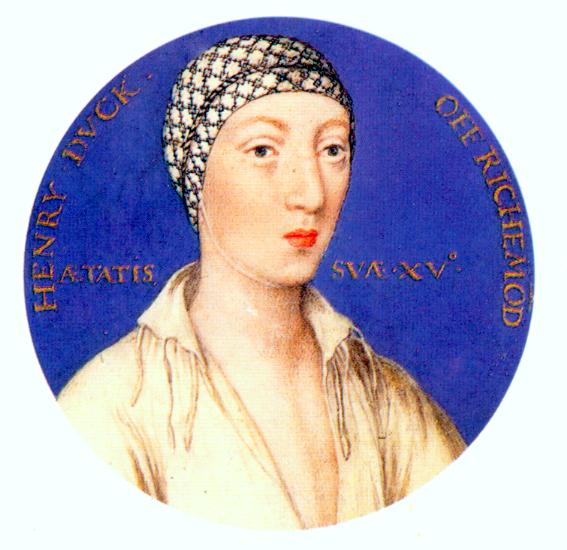
Sarah:
So, as you were saying before, these two tombs were created at the same time, under the guidance of the third Duke of Norfolk, so it’s not surprising that they look similar to each other.
Sandra:
They would have been very similar, except for the relative absence of religious iconography because later on, after the Reformation, such iconography was not so important. Heraldic imagery was more important; the family that you came from; the lineage that you had – that’s what is realized in the carvings around this tomb – and it’s got no effigies on the top.
Sarah:
Do you think there were meant to be recumbent figures on this tomb? Is there any evidence for that?
Sandra:
No effigies have ever been discovered. It’s another indication that the tombs are not complete. This tomb was in the process of being made at Thetford Priory when it was moved.
Sarah:
Is Mary Howard, Henry Fitzroy’s wife, buried here next to him?
Sandra:
Well, it’s possible. I’ll say more on that in a moment!
Sarah:
Perhaps just thinking chronologically, before we go on to our final Duke of Norfolk, we could move on over to look at the colourful tomb that we have in front of us. This is Henry Howard’s tomb. It is very different from the others, isn’t it?

Image: © The Tudor Travel Guide
Sandra:
Yes, and that is because it was constructed and brought to Framlingham in the early seventeenth century. The Earl of Surrey, Henry Howard, the eldest son of the third Duke was a very colourful character. He was very learned; a great scholar; a great poet and, like a lot of the Howards, he thought a lot of himself!
In 1546, he foolishly added the coat of arms of King Edward I to his own heraldry. King Henry VIII feeling vulnerable and cantankerous as his life drew to a close took exception to this and had him thrown into the Tower, accused of treason. He was tried and found guilty – and subsequently, executed. This might account for the fact that his coronet lies at his knee rather than on his head – because his head was removed.

Image: © The Tudor Travel Guide
It was his son that brought this tomb here and, again, the iconography is totally different. There’s no religious iconography on this tomb whatsoever; just his heraldic imagery and his family – his three daughters and his two sons one of whom, of course, took on the title of the Duke of Norfolk and became the fourth Duke of Norfolk.
Sarah:
So was his body retrieved from the Tower?
Sandra:
A major study was carried out on this tomb by Dr Lisa Ford of Yale University quite recently. She’s been to All Hallows and the Tower and they have no remains of the Earl of Surrey buried there. The story was that his body was removed and he was brought here. However, in the 1970s, this tomb was renovated because it was beginning to show some signs of weakness. It’s made of alabaster and I’ve seen photographs of the tomb raised to the ground. They didn’t go any lower down, so we don’t know for sure if his body is actually beneath the tomb.
Sarah:
Ah well, there’s a mystery! So we’ve got one more tomb to look at and this is just over to my right side and it’s sandwiched between the tombs of Henry Howard and Henry Fitzroy. Who do we have here?
Sandra:
Nobody! We definitely know that there are no bodies inside this tomb! It just purely and simply a memorial to the wives of the fourth Duke. Again, we can see that it is not finished.

Sarah:
How many wives did he have?
Sandra:
Well, he married very well, as all the Howards had a habit of doing. He had three wives. On top of this tomb, we have Mary FitzAlan, who was his first wife. Through her, the fourth Duke inherited the lands at Arundel in Sussex. Consequently, the Howards now live in Arundel Castle, not in Framlingham.
The poor girl was married at 16 to the fourth Duke. They had a child, Phillip, but she died a few weeks later. Childbirth was a very common cause of female mortality at the time.
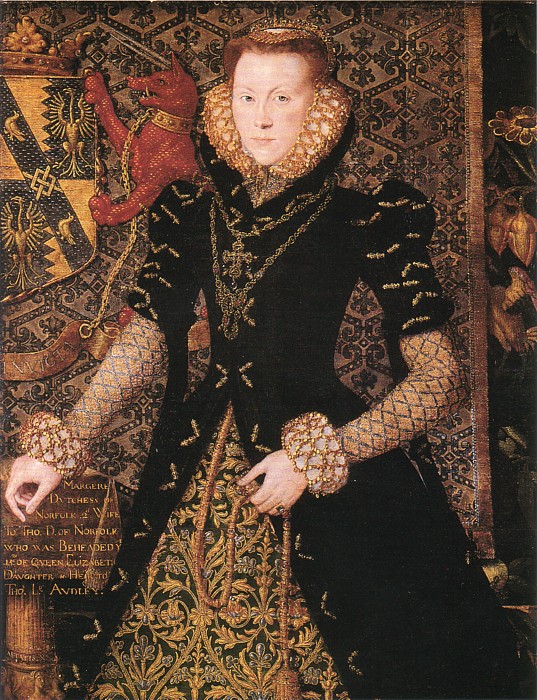
Margaret Audley is the other effigy on the top of this tomb. Also, a very wealthy woman. She too died a few weeks after giving birth to her fourth child. Then the fourth Duke went on to marry Elizabeth Dacre. Elizabeth was an extremely wealthy widow. By this time, the fourth Duke had become the wealthiest nobleman in the country because the wealth of all these women passed to him. Elizabeth Dacre had a baby with a fourth Duke. However, both of them died in childbirth at Kenninghall.
A Victorian Exploration of the Tombs
Sarah:
I understand that in the Victorian period there was a project to try and uncover whose bodies were in the Howard tombs and, indeed, if any bodies at all were in the tombs. Can you tell us about what was found?
Sandra:
I believe the Church reader, who was a bit of an amateur historian, decided to have a look in the two main tombs; those of the third Duke and of the Duke of Richmond. This was in 1841. So they dug underneath the tombs to see what they could find.
Now, the Richmond tomb had two bodies in it. One of the bodies was obviously of a young person, a male and it was almost certainly the body of Richmond himself, the son of Henry VIII. The identity of the other was less certain. That’s why previously I said that it could be Mary Howard.
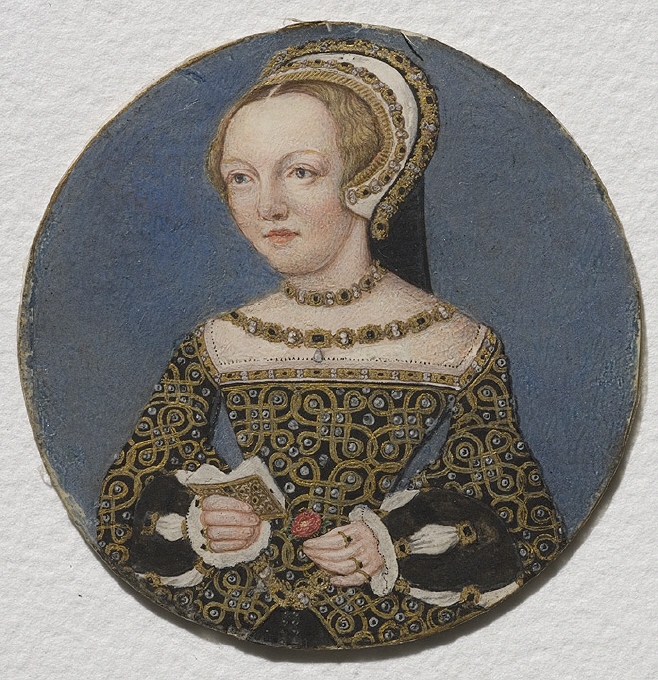
It was evident that the skull had a wound in the front of it. We know that the first Duke was killed at the Battle of Bosworth Field by an arrow in his head. So it could possibly be the body of the first Duke, or it could be of Mary Howard, whose skull was simply damaged at some point after death. We don’t know. I like to think that we’ve got the first Duke in there, although it would make more sense to have Mary Howard alongside her husband.
Sarah:
Indeed! But, of course, in those days they didn’t have the forensic techniques that we have now.
Sandra:
They did the whole project in a great hurry. They didn’t seem to examine these bodies very thoroughly. Now, in the tomb of the third Duke of Norfolk, they discovered four bodies, although I think there was very little left of one of them. So, it’s more than likely that we’ve got the third Duke buried in his tomb. There’s a woman in there too and also two more bodies. We don’t know who they are but I like to think that we’ve also got the second Duke buried in that tomb because he was such an important person and such a popular person. It’s hard to imagine that the third Duke would not have brought his father here when he brought the tombs from Thetford Priory. It would be nice to think that we’ve got the first Duke, the second Duke and the third Duke all buried here in St Michael’s!
Sarah:
We’ve still got unanswered questions, but I don’t suppose there are going to be any plans to try and get to the bottom of the mystery?
Sandra:
After the vaults were uncovered beneath the monuments, the floor was changed. We’ve now got this rather strange, marble terrazzo flooring. It would be almost impossible to dig it up to have another look and nobody has ever mentioned doing so.
Sarah:
It’s interesting that the bodies are in vaults. I know this question comes up quite a bit; are the bodies inside the tombs – because they’re big enough to carry coffins, or are they buried beneath them? I did a little bit of research about the Tudor burials at Westminster Abbey. I found that all the bodies where buried in vaults under the floor – and that’s what we have here as well, by the sound of it.
Sandra:
Yes, it appears so.
Sarah:
Well, that’s all fascinating. Thank you so much for taking us on a tour of the tombs. If you’re coming to Suffolk, I would encourage you to visit this wonderful place, if you’re interested in Tudor history. Do make your way to Framlingham – there is the castle, which is owned by English Heritage. Then, just down the road, don’t forget to pop into the Church of Saint Michael and come and marvel at these fabulous Tudor monuments. So, it just remains for me to say thank you so much, Sandra, I really appreciate you showing us around today.
Sandra:
Thank you.

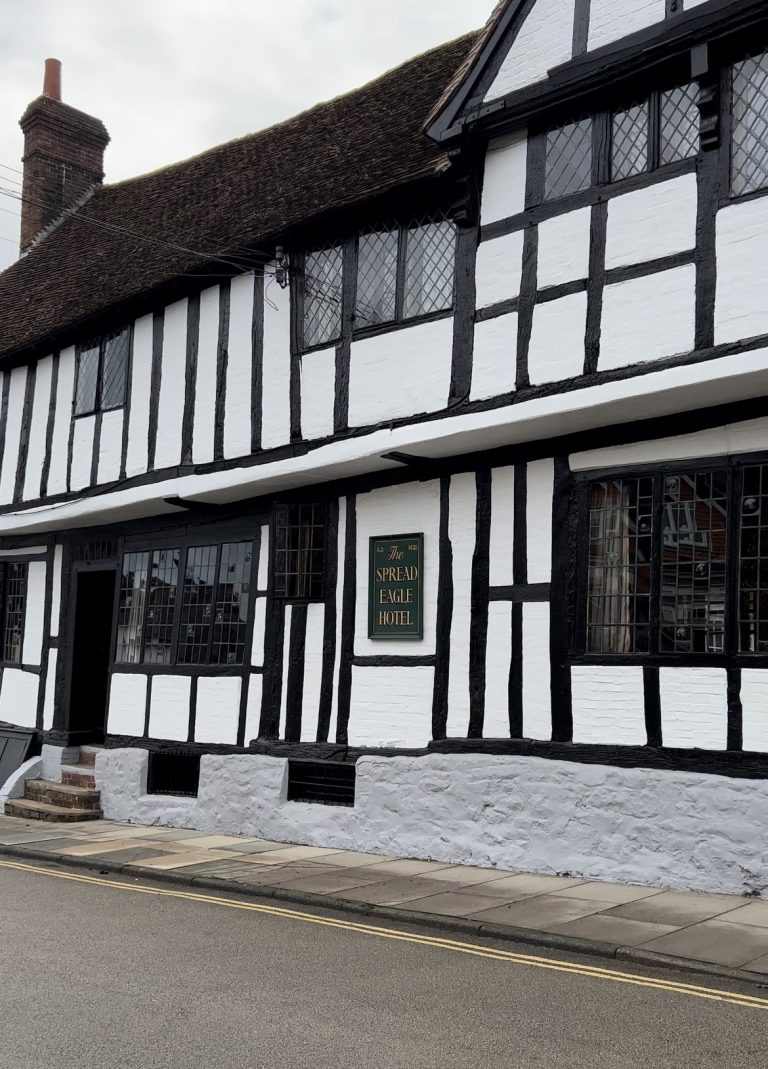
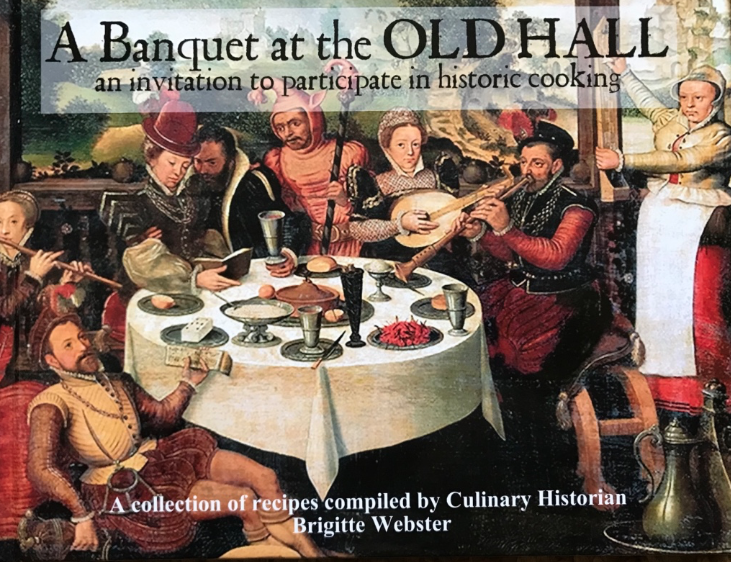
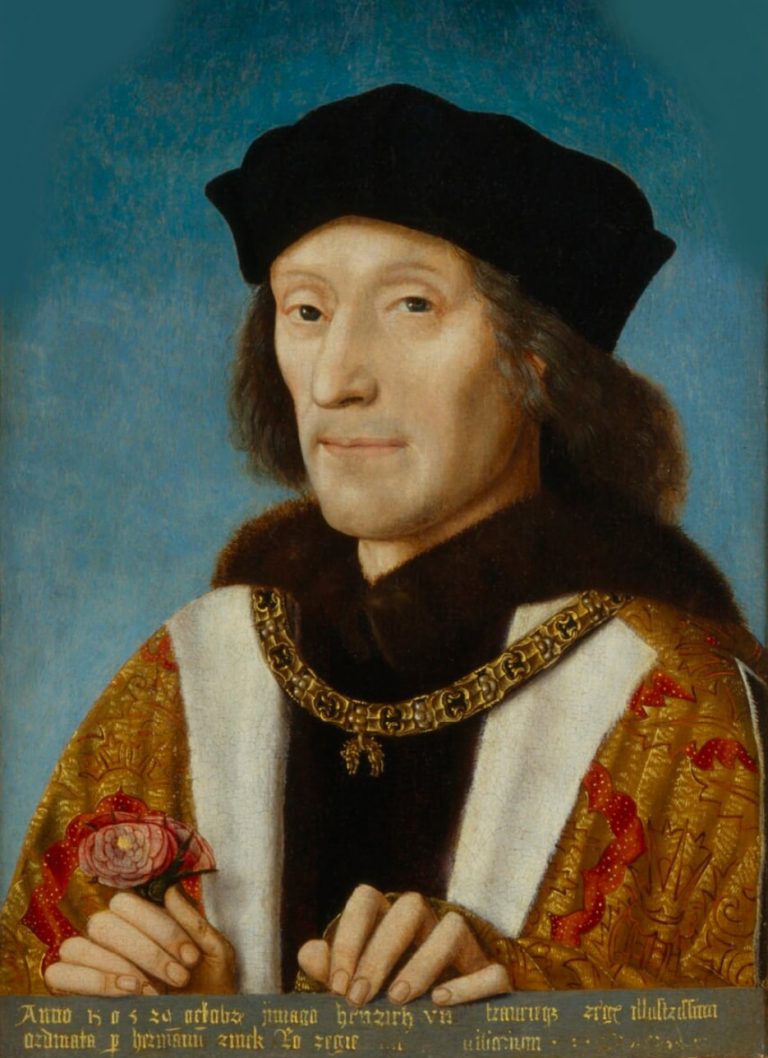
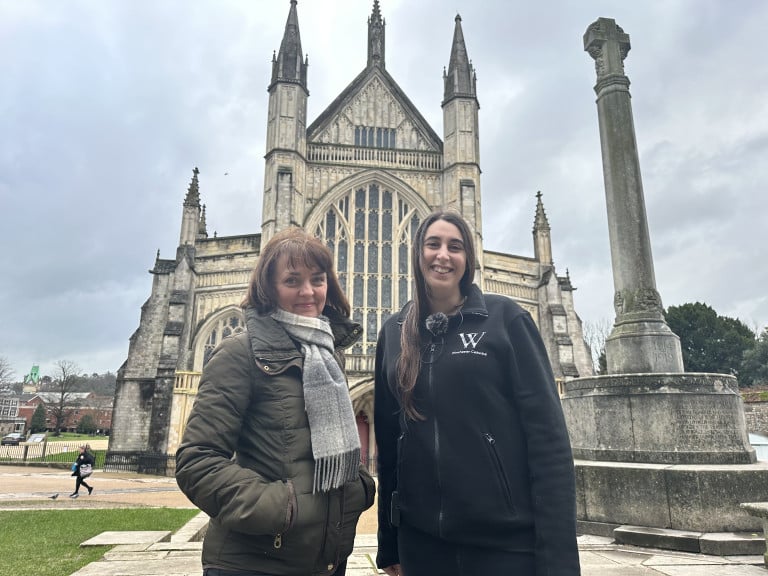
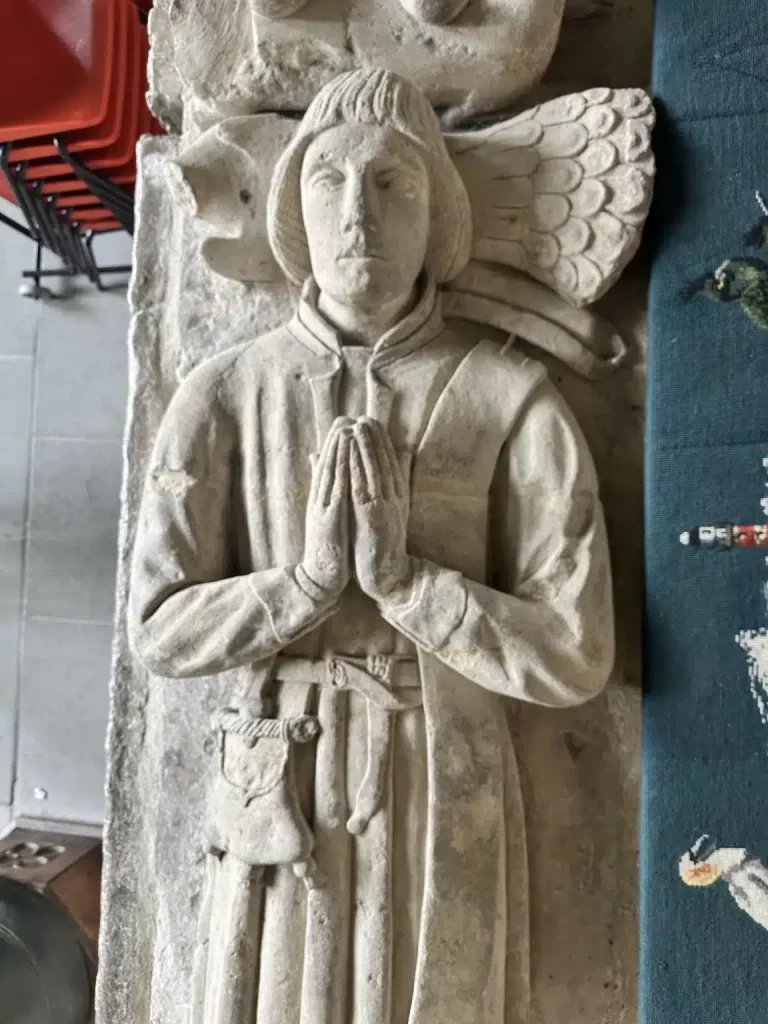
I loved this interview..so much history I have never read about. The pictures of the tombs are amazing.Thank you so much for sharing????
You are welcome, Cindy. It’s my pleasure! Thanks so much for the feedback.
Thanks Sarah and Sandra for a really interesting article on Framlingham and the Howard family. It is well illustrated too. I particularly
welcome the photos from inside the church. My list of places to visit is growing and I am looking forward to the spring!
Excellent! That is great to hear. You must let me know what you think when you get there.
Loved, loved loved this article!
If possible, would like more to read more info on Henry Howard, Earl of Surrey…esp. his poetry.
Thank you! His poetry is not something I know much about. I definitely need to find an expert to comment on that one. It’s an interesting idea. Thanks!
I just love reading these articles! I have been a fan of English history since I was a young teenager. My bucket list is to go to england, but it will never happen. I will continue to dream.
Thank you so much for your feedback, Tessa. Maybe one day you will get here. I hope so!
I really enjoyed this. Thank you ever so much! Wonderfully done ???? Do you have any videos or other blogs on the Howards as well? Cheers
Hi, I did do some videos a year or so ago but never got to put them in a final cut. Maybe one day! As for other blogs, search for Oatlands Palace re: Catherine Howard. Thanks for your appreciative comments!
Thank you I found it so interesting, I am a history fan, I always read eagerly anything to do with history especially tudor is great.
Thank you for reading and for the feedback!
Does anyone really believe that Henry Howard, Earl of Essex and poet, was executed because he had been flirting with Anne Bollyn?
Hi there! I don’t think so…Anne had been dead for 10 years by the time Henry Howard was executed…
You mention Tendring Hall IN ESSEX as a Howard seat: but you must mean Tendring Hall at Stoke-by-Nayland in SUFFOLK ( house, long-replaced & gone:lovely park, + later ancillary buildings..). This was earlier the seat of the De Tendring family, which had held the manor(s) of Tendring in Essex, not many miles distant, and from which they originated. You will find them in the Howard genealogy – and also in Stoke-by-Nayland’s glorious parish Church (another burial-place of the Howard connexion..)where there is an important & significant BRASS, q.v.
Excellent! Thanks for posting.
It is fine that they are all buried at Farmington nice to know that they are all buried together- of course Arundel is the place for the Howards nowadays